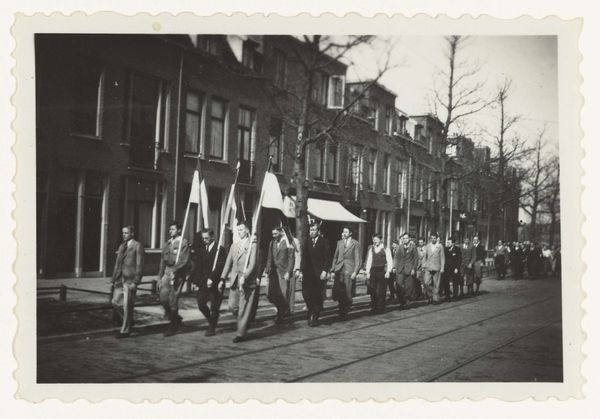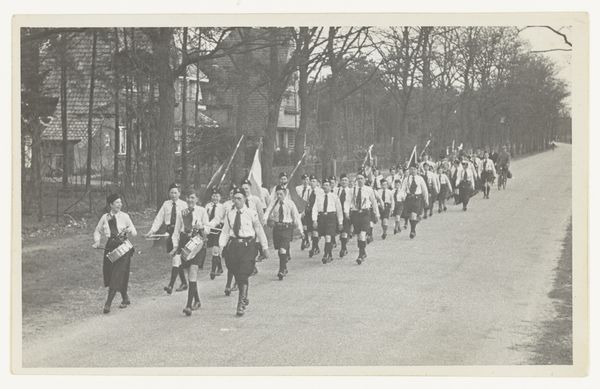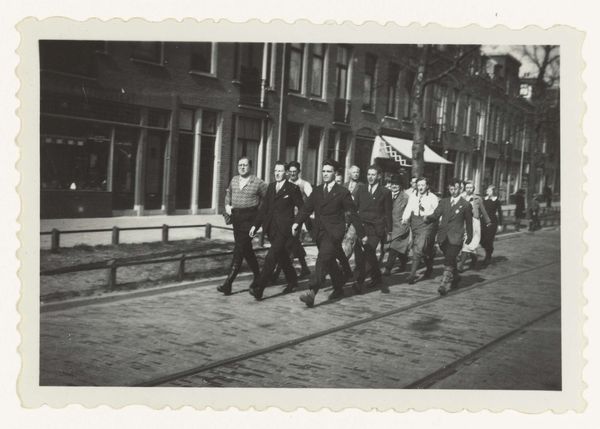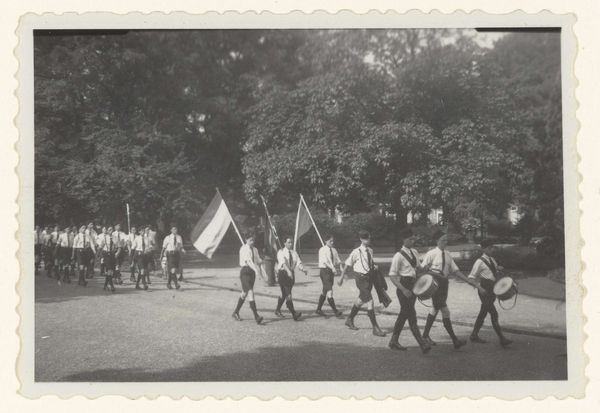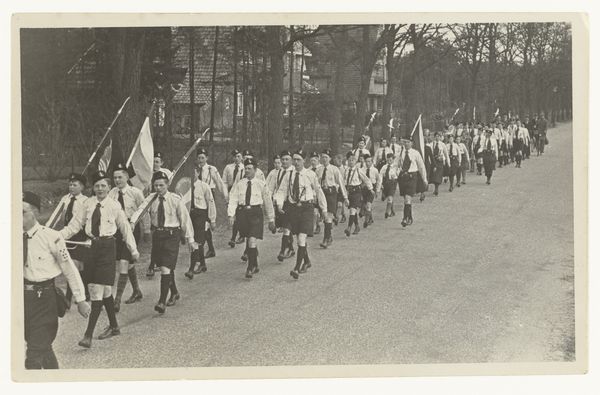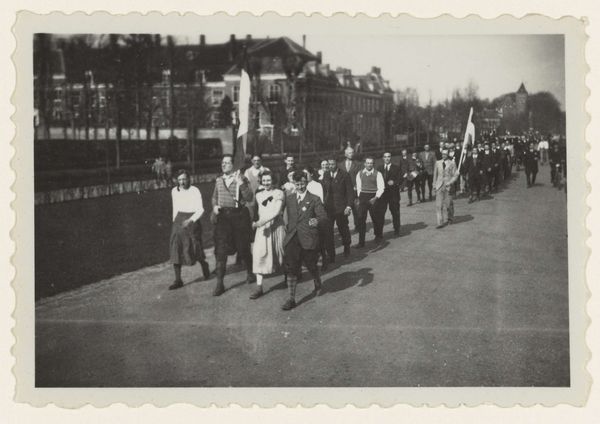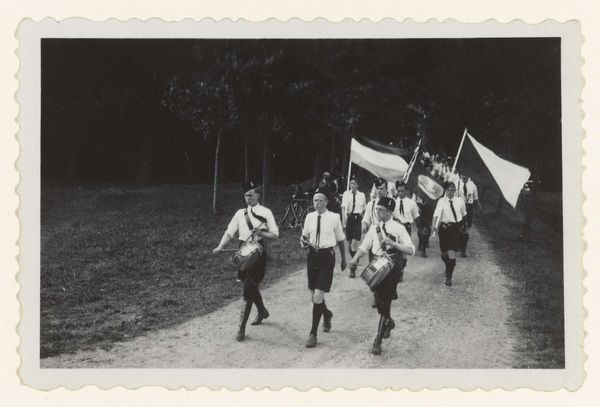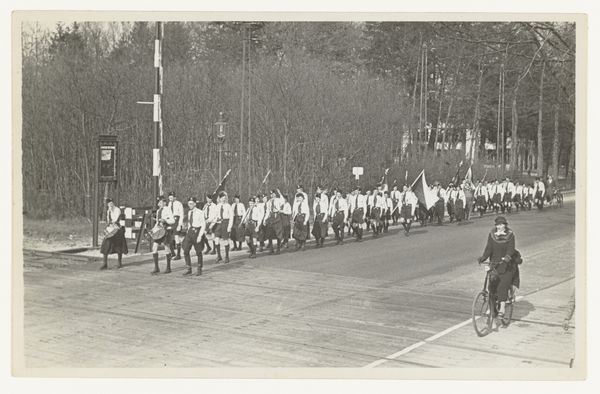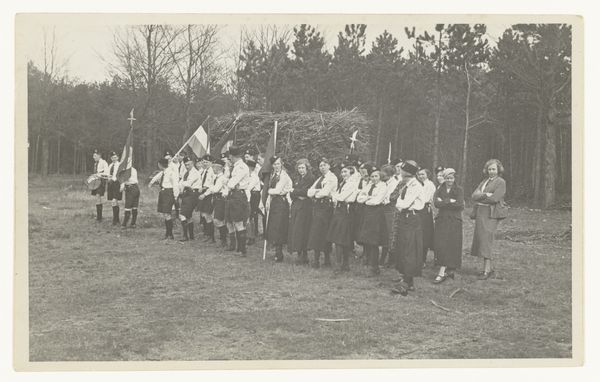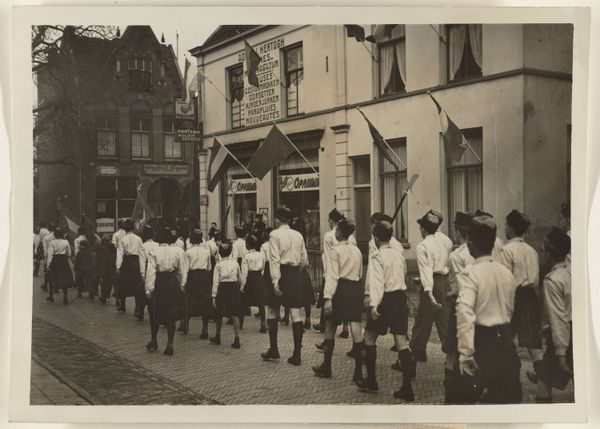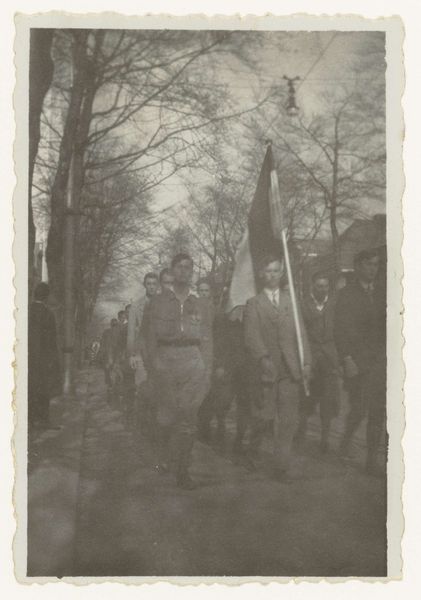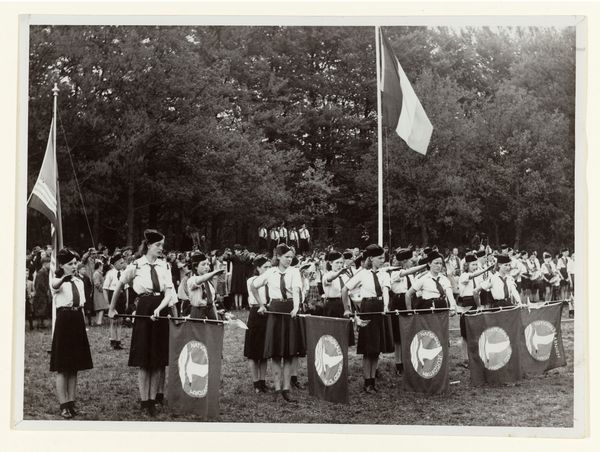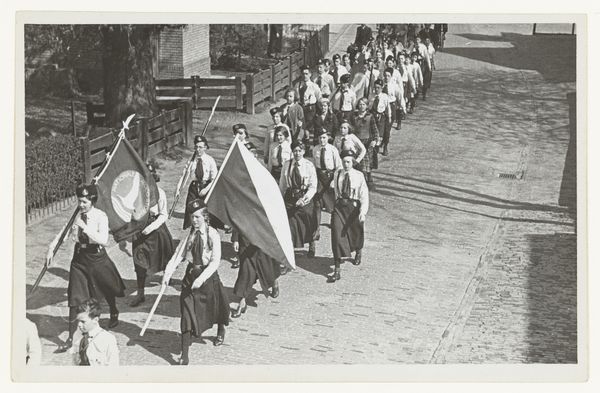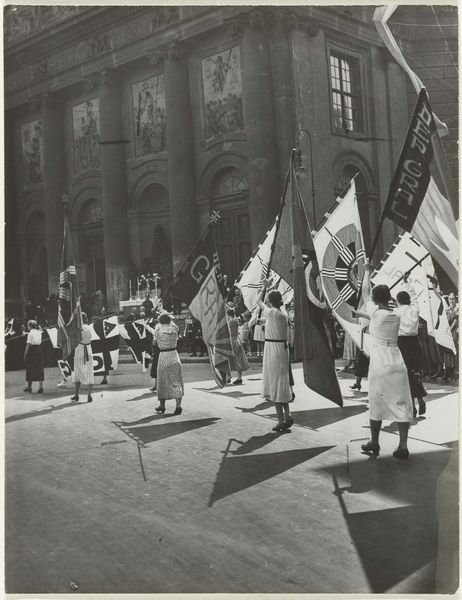
print, photography, gelatin-silver-print
#
print photography
# print
#
landscape
#
archive photography
#
photography
#
group-portraits
#
gelatin-silver-print
#
history-painting
#
modernism
#
regionalism
Dimensions: height 5.5 cm, width 8 cm
Copyright: Rijks Museum: Open Domain
Curator: What a striking gelatin-silver print. This photograph, potentially taken between 1934 and 1936, depicts an "Optocht Jeugdstorm," a youth group parade affiliated with the Dutch NSB party. It’s currently held here at the Rijksmuseum. Editor: It's a bleak image, almost austere. The monochromatic palette amplifies the sense of uniformity, doesn’t it? There's a coldness to the procession. The building in the background looks quite ordinary; yet in context it speaks volumes. Curator: Indeed. The NSB’s assimilation of youth organizations was strategic. These visual records are crucial for understanding the construction of national identity and how such movements infiltrated everyday life, shaping gender roles and expectations for future generations within a political context predicated on exclusion. What social messages were they communicating? Editor: Precisely. It makes me wonder about the source of the paper itself, where it was produced, and who profited. Also the printing technology and what its wide-scale application made possible in terms of propaganda and social engineering. Curator: Thinking about it, photography itself becomes a tool for crafting a specific narrative, manipulating visual culture to reinforce ideologies. This image freezes a specific historical moment, seemingly innocent. The landscape, too, it looks so common but the symbols, and the group themselves are signaling the political rhetoric they follow. How did that context change when exhibited, copied and circulated at the time? Editor: And the labour... Consider the individuals who developed the print, the conditions of photographic production, or the hands involved in circulating the image. That is an integral part of the image, a story in itself. The cumulative impact of making the photographic paper, to expose the photo, and ultimately circulate it. It implicates so many others who became an essential component to how it came to being and functions in culture. Curator: This photograph serves as a stark reminder that historical imagery carries not only aesthetic and documentary value but also deep political and ideological weight, which must be addressed and considered. It challenges us to look at the subtle nuances of power and control in times when everything appears mundane. Editor: Absolutely, I am left thinking about not just the ideology on display but about the unseen infrastructure—material, social, human—that enabled its very propagation, its presence here now.
Comments
No comments
Be the first to comment and join the conversation on the ultimate creative platform.
